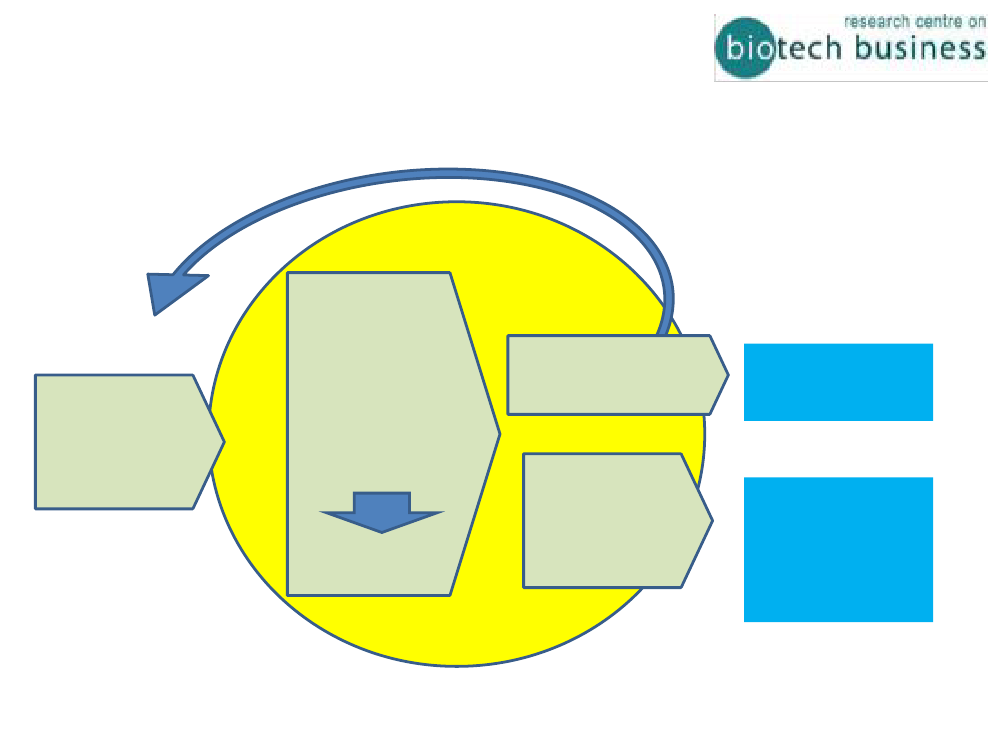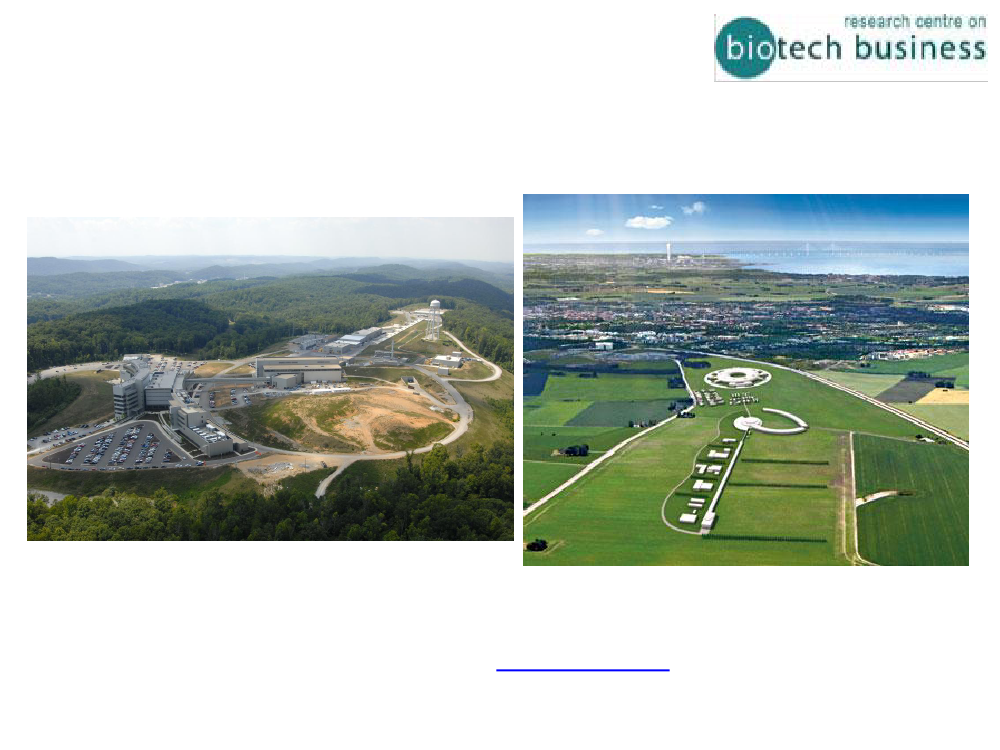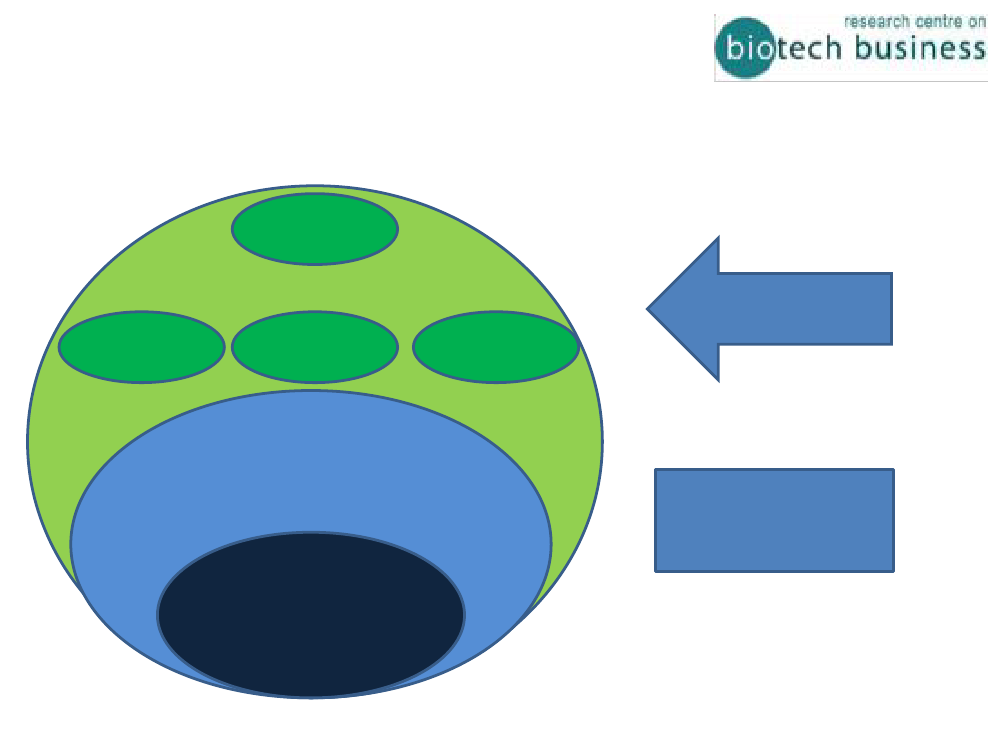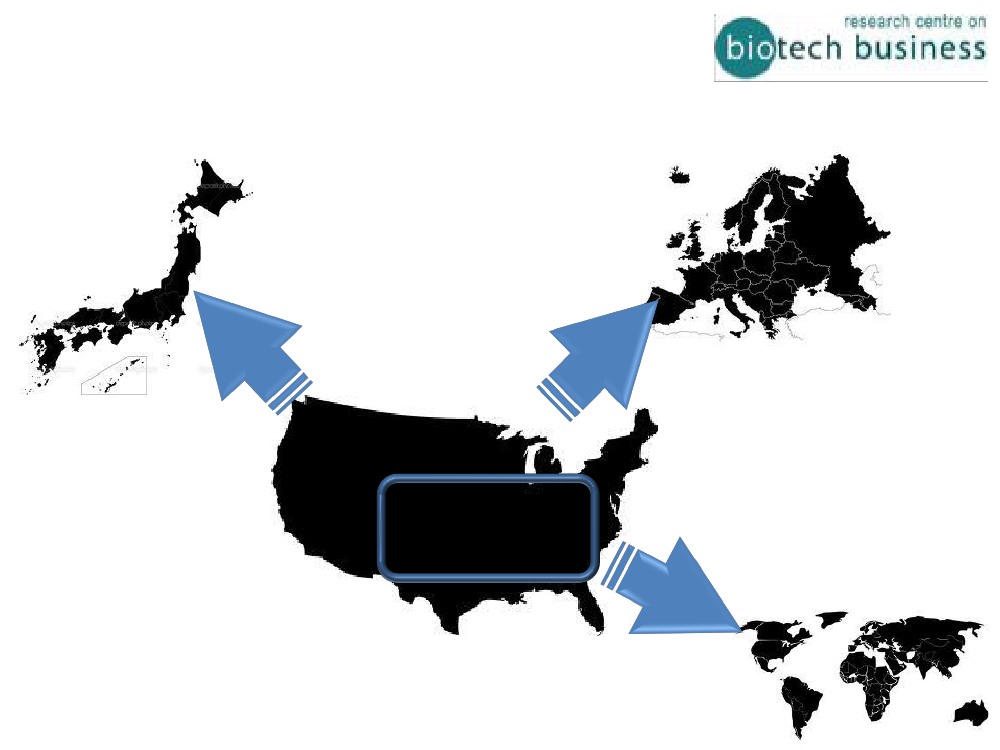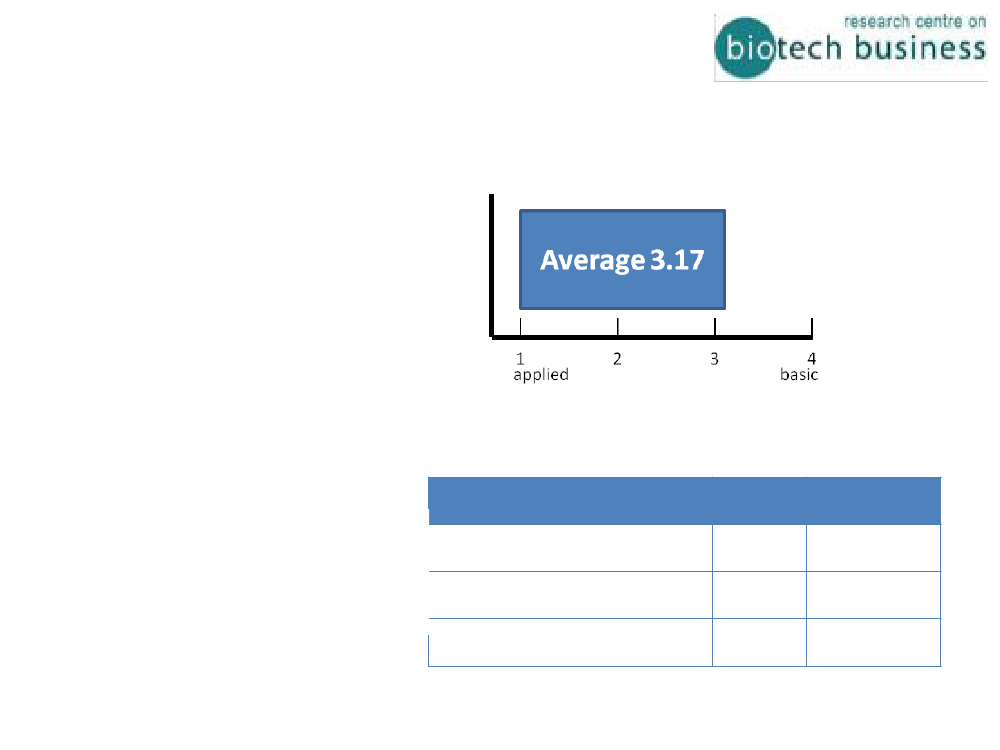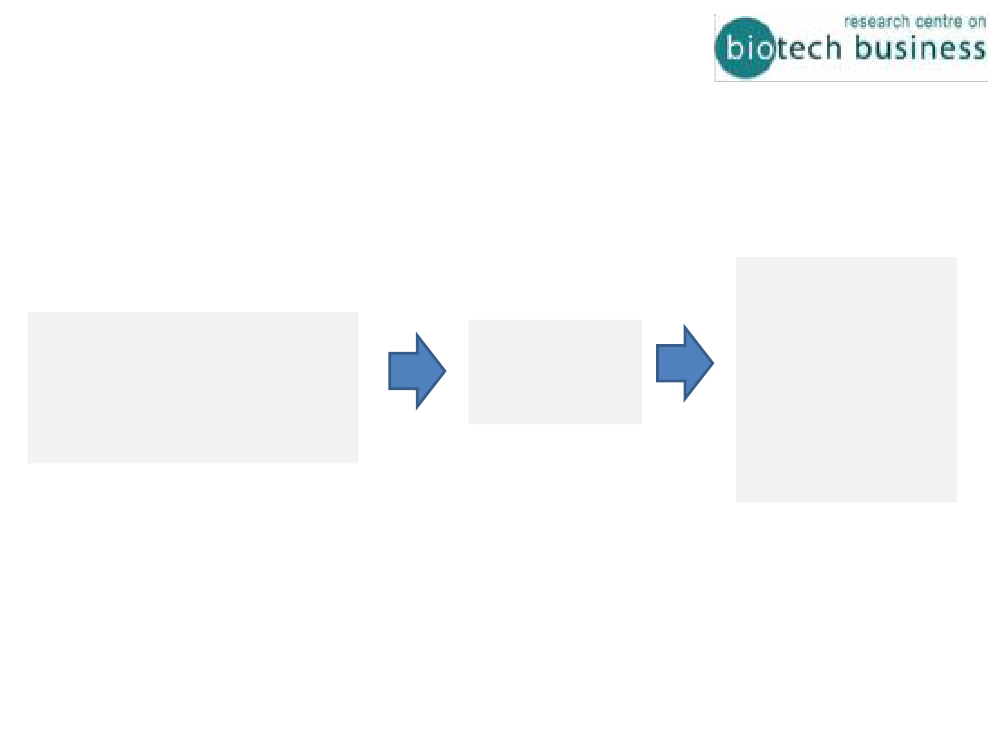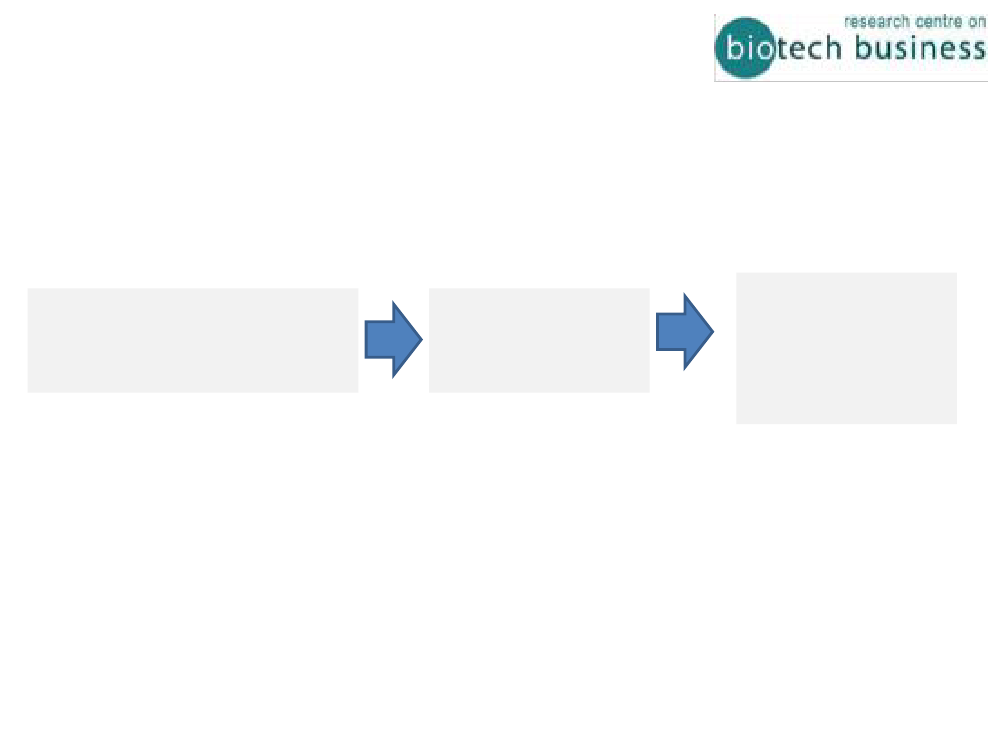Udvalget for Forskning, Innovation og Videregående Uddannelser 2011-12
FIV Alm.del Bilag 157
Offentligt
ESS: Lessons from international experienceon Large Scale Research Facilities (LSRFs)Finn ValentinResearch Center on Biotech Business –Copenhagen Business SchoolFebruary 24, 2011
May 13, 2013
� 2012, Research Center on Biotech Business
1
LSRFs are seen as drivers of growth,and regions are competing to host themLSRF drive growth through two distinctmechanisms:A. Investment driver (initial and ongoing funding of thefacility translates into local demand.)A. Knowledge driver: SciencenewknowledgeInnovation giving rise to economic growth
May 13, 2013
� 2012, Research Center on Biotech Business
2
What we know about LRSFs asgrowth drivers•Investment driver: Well documented•Knowledge driver: We know very little,And we cannot just generalise from economic effects ofother knowledge institutions, e.g. Universities (theyhave a much broader mandate in generating anddiffusing new knowledge)•This presentation is onknowledge drivers,based onnovel research on LSRFs carried out here at CBS.•We need a simple model of LSRFs as knowledgedrivers:May 13, 2013� 2012, Research Center on Biotech Business3
A simple model of knowledgedrivers of LSRFsBenefits for the hostregion /nationFacility internalresearchNovelcombinationsof talents,enabled bypowerfulinstrumentationNewknowledgeBetterscienceApplicationsandspillovers toinnovationStrongeruniversities
Inflow ofinternationalscientists
Innovationsto existingfirms andstart-ups
May 13, 2013
� 2012, Research Center on Biotech Business
4
To drive growth all factors in themodel matter. But one isparticularly critical :
Inflow of internationalscientists
This presentation examines1. How the global research community is connected to LSRFresearch ?2. What factors offer stronger/weaker connectivity to globalresearch.May 13, 2013� 2012, Research Center on Biotech Business5
Learning for ESS from the closestparallelWe study the closest parallel to ESS: The Neutron SpallationSource at Oak-Ridge*)European Spallation Surce (rendering)
Oak-Ridge Spallation Neutron Source
*) “How Large Scale Research Facilities Connect to Global Research”Giancarlo Lauto and Finn Valentin.[email protected]May 13, 2013� 2012, Research Center on Biotech Business6
Methodology (1)•••We consider the publications involving OR/NSD staff or resources in 2006-2009We comparethe propensity to partner with international colleaguesbetweenscientists affiliated to OR-NSD to those affiliated to other American organizationsWe consider–Collaboration attributes•Institutional: number of collaborators affiliated to an institution of the sametype as the focal author•Social: the total number of repeated collaborations established by each focalauthor in projects carried out on OR/NSD-related research–Project attributes•Discipline: Physics, Physics Multidisciplinary, Other fields•Positioning along the basic-applied continuum•Average year of publication–Individual attributes•Type of affiliation: ORLN, University, Res. Lab, Business, ORLN+, Multiple•Scientific prominence; n. of publications; n. of total collaborators.May 13, 2013� 2012, Research Center on Biotech Business7
Methodology (2)Breakdown of US authors and institutional typesMultiple
American ScientistsUniversityResearchLabBusiness
1082 focalscientists
Scientists affiliated toORLN and other US org.ORLNresidentsMay 13, 2013
589 papers (articlesand proceedings)
� 2012, Research Center on Biotech Business
8
Two types of findings are presented1) Simple descriptive statistics, showing the profiles ofglobal connectivity of SNS researchHowever we observe the first four years of a facility-life ofperhaps 40 years., e.g. giving particular emphasis toconstruction and calibration of new instruments. Tomaximise ESS-relevant experience we want to“remove” Oak-Ridge specificities as much as possible.2) Therefore, in statistical analysis we model the generalpropensity of each US scientists doing research at thefacility to collaborate internationallyMay 13, 2013� 2012, Research Center on Biotech Business9
Profile of US scientists working onOR/NSD-related research (1)Distribution of focal scientists by affiliation
3%6%25%
•One quarter of authors isaffiliated to ORLN, 7% toORLN-plus otherAmerican organizations
22%7%
37%Oak-Ridge residentUniversityBusinessMay 13, 2013� 2012, Research Center on BiotechBusiness
Oak-Ridge plusResearch LaboratoryMultiple10
Total number of collaborationsfound in the 580 papers
16.580LSRFs are indeed powerful drivers ofresearch connectivity
May 13, 2013
� 2012, Research Center on Biotech Business
11
Patterns of collaboration (1)•The 589 focal papers generate anetwork of 1801 scientists, 719 ofwhich are international – i.e. every 3focal authors involve 2 foreign partners
May 13, 2013
� 2012, Research Center on Biotech Business
12
Patterns of collaboration (1)•The 589 focal papers generate anetwork of 1801 scientists, 719 ofwhich are international – i.e. every 3focal authors involve 2 foreign partners
May 13, 2013
� 2012, Research Center on Biotech Business
13
International collaboration of Residentscientists83JapanEurope
169
903
276 ResidentsOther
domesticNumber of partners collaborating with Resident scientists.Total collaborators: 1210
55
International collaboration of all USscientists with research at NSD114JapanEurope
313
1082 USscientistsOther
Number of partners collaborating with US-scientists involved inORLN/NSD research. Total collaborators: 1802. 68 scientistswere affiliated to institutions in different countries.
152
Profile of American scientists workingon OR/NDS-related research (2)•Scientists investigatingbasic-oriented issuesprevailAverage CHI-Level of focal scientists’publication set
Distribution of focal scientists by field
•Physics is the mostprevalent discipline
FieldPhysics specializedPhysics multidisciplinaryOther disciplines
n.297445340
%27.4541.1331.4216
May 13, 2013
� 2012, Research Center on Biotech Business
What drives scientists to collaborate internationally?Direction of effectsfrom regressions.Institutional proximitySocial proximityBasic orientationFields (base=Physics)Physics + OtherOther fieldInstitution (base=Resident)SecondmentUniversityFederal LabBusinessMultipleEstablishment ofcollaborationpositivepositivepositivepositivepositivepositivepositivestrongly positive17
Size of networkPositive
Results of Zero Inflated Negative Binomial Regression ofon Biotechof international scientists� 2011, Research CenternumberMay 13, 2013Businesscollaborating with US-authors involved in ORNL/NSD-related research (1082 cases).
What the models tell us:Applied issues, close to technology, are lessconducive for global research connectivity:A two-step pathway:
Maximising globalresearchconnectivity
BasicResearch
Translationinto localinnovationandtechnology
I.e. A trade-off between global reach and tech’alrelevance.Don’t overdo the innovation agendaMay 13, 2013� 2012, Research Center on Biotech Business18
What the models tell us (2)Universities are critically important to reap thepotential of global connectivity
Facility-relatedresearch
Universityinvolvement
Globalresearchconnectivity
The lesson: Get university research deeply involvedin LSRF-research. Danish universities should getprepared for this challenge. An important strategicconcern for the universities and for the Ministry.May 13, 2013� 2012, Research Center on Biotech Business19
In conclusionESS appears to offer the potential of significantlystrengthening the global connectivity of theØresund science and knowledge community.
It provides a platform for attracting precisely thetype of brain-workers given priority in thepolitical rhetoric.Are the politicians delivering on making theregion attractive: providing the internationalschools, the transportation, the taxation etc.allowing us to realise this potential?May 13, 2013� 2012, Research Center on Biotech Business20




